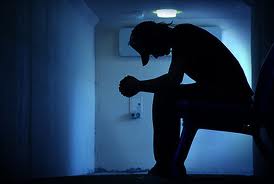Article #1
 The study was conducted by Dr. Mahmood I. Siddique, clinical associate professor of medicine at Robert Wood Johnson Medical School in New Brunswick, N.J. It was presented June 9, 2010, in San Antonio, Texas, at SLEEP 2010, the 24th annual meeting of the Associated Professional Sleep Societies LLC. The study involved 262 high school seniors with an average age of 17.7 years who were attending a public high school in Mercer County, N.J. Participant show socio-demographic characteristics using a cross-sectional survey. Too much daytime sleepiness was indicated by a score of 10 or higher on the Epworth Sleepiness Scale, and mood was evaluated with a validated depression scale. The results indicated that high school seniors were three times more likely to have strong depression symptoms if they had excessive daytime sleepiness.
The study was conducted by Dr. Mahmood I. Siddique, clinical associate professor of medicine at Robert Wood Johnson Medical School in New Brunswick, N.J. It was presented June 9, 2010, in San Antonio, Texas, at SLEEP 2010, the 24th annual meeting of the Associated Professional Sleep Societies LLC. The study involved 262 high school seniors with an average age of 17.7 years who were attending a public high school in Mercer County, N.J. Participant show socio-demographic characteristics using a cross-sectional survey. Too much daytime sleepiness was indicated by a score of 10 or higher on the Epworth Sleepiness Scale, and mood was evaluated with a validated depression scale. The results indicated that high school seniors were three times more likely to have strong depression symptoms if they had excessive daytime sleepiness.Article#2
 The study was conducted by Lawrence T. Lam, Ph.D., of the School of Medicine, Sydney, and the University of Notre Dame, Fremantle, Australia, and Zi-Wen Peng, M.Sc., of the Ministry of Education and SunYat-Sen University, Guangzhou, China, in August 2010. It will appear in the October print issue of Archives of Pediatrics & Adolescent Medicine. 1,041 teens in China were assessed for depression and anxiety using previously validated scales. They also completed a survey to identify pathological Internet use, including questions that reflect typical behaviors of addiction. At the beginning of the study, 62 participants were classified as having moderately pathological use of the Internet, and 2% were severely at risk. Nine months later, the adolescents were re-assessed for anxiety and depression; 2% had significant anxiety symptoms and 84% had developed depression. The risk of depression for those who used the Internet pathologically was about two and a half times that of those who did not. No relationship was observed between pathological Internet use and anxiety.
The study was conducted by Lawrence T. Lam, Ph.D., of the School of Medicine, Sydney, and the University of Notre Dame, Fremantle, Australia, and Zi-Wen Peng, M.Sc., of the Ministry of Education and SunYat-Sen University, Guangzhou, China, in August 2010. It will appear in the October print issue of Archives of Pediatrics & Adolescent Medicine. 1,041 teens in China were assessed for depression and anxiety using previously validated scales. They also completed a survey to identify pathological Internet use, including questions that reflect typical behaviors of addiction. At the beginning of the study, 62 participants were classified as having moderately pathological use of the Internet, and 2% were severely at risk. Nine months later, the adolescents were re-assessed for anxiety and depression; 2% had significant anxiety symptoms and 84% had developed depression. The risk of depression for those who used the Internet pathologically was about two and a half times that of those who did not. No relationship was observed between pathological Internet use and anxiety.Article#3
 The study was conducted by researchers at the University of Bergen, Norway, and the Institute of Psychiatry (IoP) at King's College led by Dr Robert Stewar. The study consisted of a survey of over 60,000, complemented with already existent records. Researchers found that over the following 4 yearsusing the survey, the mortality risk was increased to a similar extent in people who were depressed as in people who were smokers.
The study was conducted by researchers at the University of Bergen, Norway, and the Institute of Psychiatry (IoP) at King's College led by Dr Robert Stewar. The study consisted of a survey of over 60,000, complemented with already existent records. Researchers found that over the following 4 yearsusing the survey, the mortality risk was increased to a similar extent in people who were depressed as in people who were smokers.